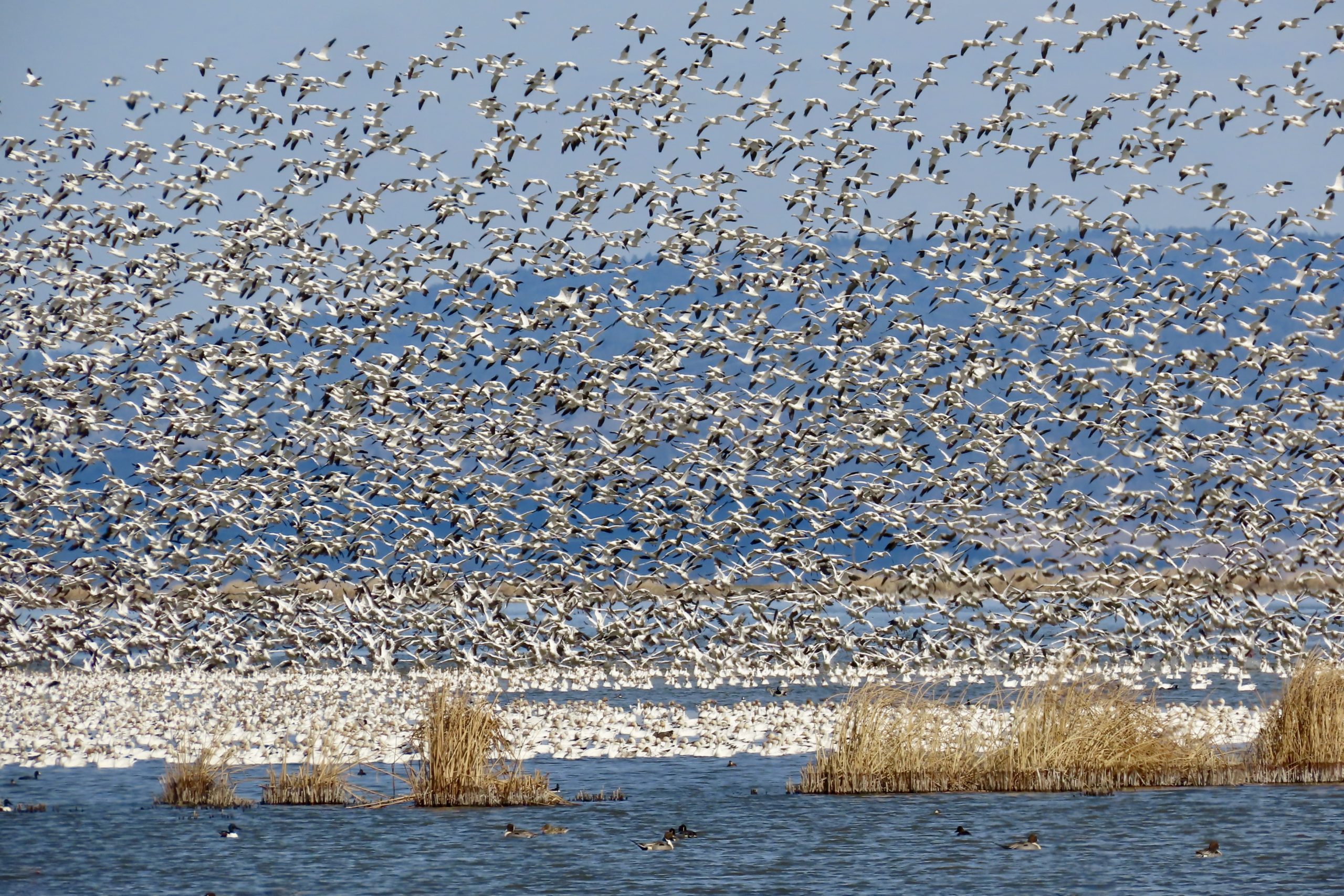By Pepper Trail WRITERS ON THE RANGE
For the past few weeks, dozens of turkey vultures have been circling on thermals over my house in Oregon, preparing to soar away south into California. Not long ago, I saw a late monarch butterfly passing high overhead, its orange wings incandescent against the blue sky.
These are examples of the great migratory movements that enliven the West every spring and fall.
The long-distance migrations of seemingly fragile monarch butterflies are among nature’s most incredible phenomena, with eastern populations wintering in vast numbers in a tiny refuge in Mexico, and western populations at a few sheltered spots along the California coast.
Migration is central to the lives of many wild animals of great public interest and huge economic importance, from salmon to waterfowl to large mammals like pronghorn and elk. Just about everybody attuned to the natural world looks forward to some migratory milestone, whether it’s the arrival of the first robin of spring or the beginning of duck hunting season.
Thanks to advances in technology and data collection, this is a golden age for research on migration. Radar allows documentation of the magnitude of animals on the move: On a recent night, for example, it was estimated that 5.4 million birds were in the skies over Oregon.
The citizen science database eBird, combined with advances enabling the detection of signals from lightweight tags attached to migrating animals, have provided migration maps of stunning specificity. For an example with turkey vultures, go to https://tinyurl.com/mtndawtm.
At the same time, we are also coming to understand the many threats to migration. The drastic declines of Pacific salmon are known all too well. Elk and pronghorn face ever-increasing obstacles posed by highways, roads to access and extract fossil fuels and other developments on the landscape.
But what’s happening to migratory birds really tells the story. Based on many lines of evidence, scientists have concluded that 2.9 billion—yes, billion—breeding adult birds have been lost in the United States since the 1970s. That is one-third of the total bird population of the United States.
Of that 2.9 billion, 86%, 2.5 billion, are migratory species. Although declines of birds in the western part of the country are less severe overall than in the East, many of our familiar migrants are showing dramatic reductions, including rufous hummingbird, down 60%, common nighthawk, 58%, band-tailed pigeon, 57%, Lewis’s woodpecker, 67%, and evening grosbeak, 92%.

Why is this happening? The loss of habitat is the main problem for many species, especially grassland birds. For example, between 2018–19 alone, 2.6 million acres of grassland in the Great Plains were converted to row-crop agriculture. That’s an area larger than Yellowstone National Park. Loss of winter habitat in Mexico and Central America also threatens many species.
Human constructions from power lines to wind turbines to oil pits increase the dangers of migration for birds. The greatest hazard may seem mundane, but it’s ubiquitous: windows. Collisions with windows are estimated to kill a staggering billion birds in this country each year. Brightly lit skyscrapers are also a menace to songbirds, most migrating at night.
Climate change adds to the threats for migratory species. In addition to broad effects like widespread drought in the West and melting permafrost in the Arctic, climate change can scramble the relationship between migration timing and the availability of food resources. Hungry migrants may arrive in spring to find that the peak of insect abundance has already passed.
Fortunately, there are many things each of us can do to help migrating birds. First, advocate for the preservation of bird habitats—and provide your own by planting native fruiting and flowering plants on your land.
Second, take steps to reduce bird collisions with your windows. Many solutions are available, including “Zen wind curtains”: light cords hanging in front of the glass. For DIY instructions, and much other information, go to: https://tinyurl.com/2hf558nj. And keep your cats inside, as free-ranging cats take a staggering toll on birds.
Finally, support organizations that advocate for birds and their habitats or promote research on migratory birds, such as the National Audubon Society, the American Bird Conservancy, and the Cornell Laboratory of Ornithology.
Together, we can save the lives of millions of birds, and help ensure that their incredible migratory journeys never end.
Pepper Trail is a contributor to Writers on the Range, writersontherange.org, an independent nonprofit dedicated to spurring lively conversation about the West. He is a naturalist and writer in Oregon.











